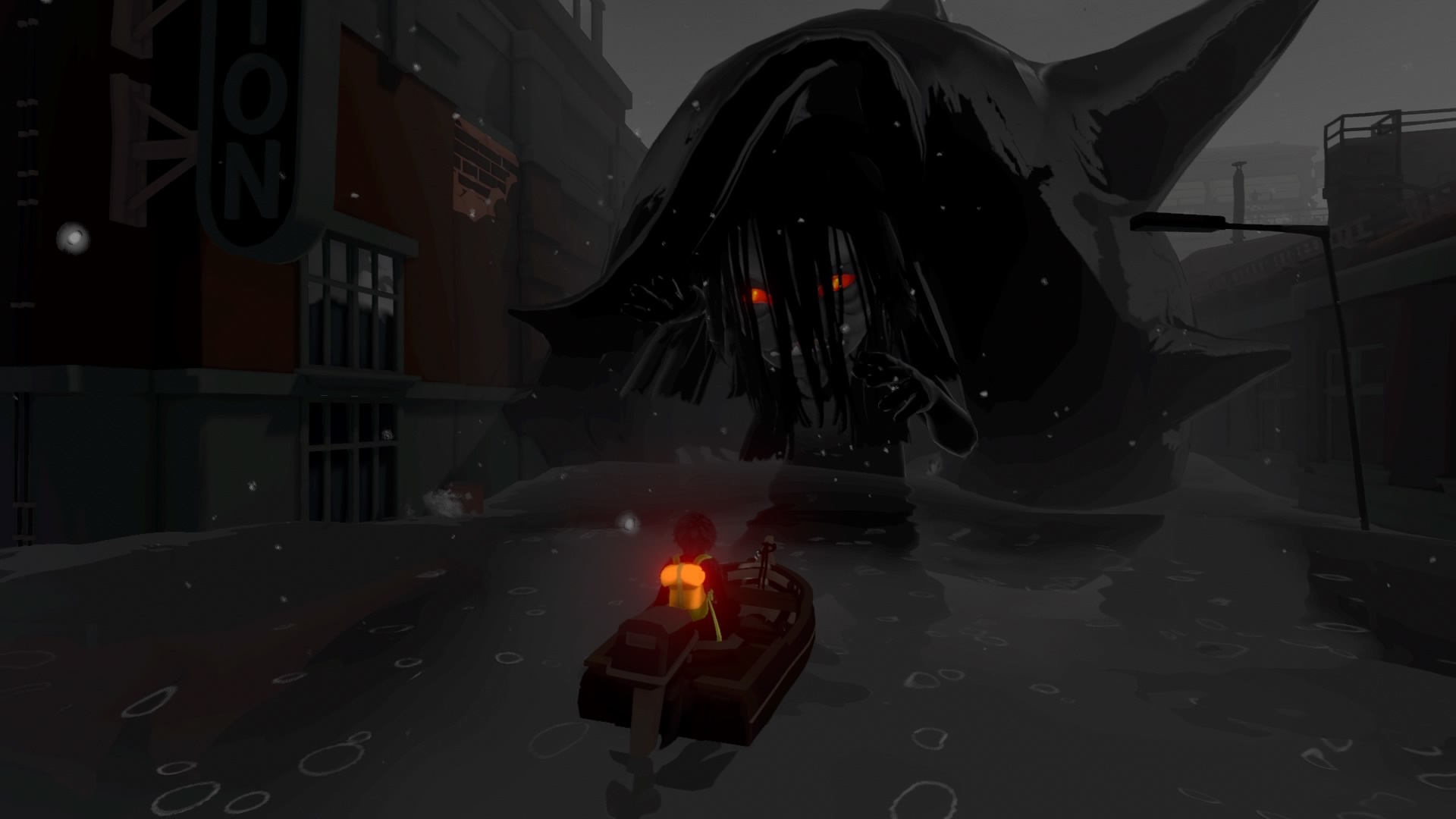
The monster starts throwing itself at the sides of buildings and beneath the big chunks of debris Kay uses as sanctuary. It's a tense scene, with each expanse growing in complexity and risk the closer Kay gets to her goal. The world is dark and stormy yet again, and to reach the objective Kay needs to swim through open expanses of churning sea water, dog-paddling from rooftop to rooftop while the monster gives chase. Geppert says the creature designs largely came from furious, impassioned scribbles in her notebook, sketches made in some of her loneliest, most painful moments. Shortly after banishing the shell-demon, another one appears beneath the water, an unnatural creature that looks like a long, slender whale covered in fur with a humanoid face.


Creative director and writer Cornelia Geppert says the narrative is inspired by her own experiences, but that she based a good amount of the monsters on accounts of other people's manifestations or byproducts of solitude. The conch-shelled humanoid is just one manifestation of that, likely to do with self-doubt. Sea of Solitude is about loneliness, which is obvious enough, but it won't be cute with the real world byproducts of prolonged isolation. Bit of a surprise, hearing a monster straight out of a Junji Ito book resort to schoolyard tactics in a game this pretty and clean.ĭisorienting, explicit, and unpredictable: it's what makes Sea of Solitude feel like it's not set up to be just another short, cute narrative game with hazy themes. But I'm still struck by how spooky the monster is, and how hearing it tell me I'm not worth shit finds that charged ground between funny and cruel. None of it looks particularly challenging or makes sense as a mechanical allegory for overcoming the Self Doubt Monster-a tiny navigation tax to 'find the light' inside yourself doesn't quite cut it, so I hope Sea of Solitude gets a little more complex and nuanced along the way. Each monster requires different tactics to overcome for the sake of variety and expressing each monster's theme through visual design and play. Light and color are restored to the scene (I know, it's doing the thing, but it's not the only thing it does) and the conch demon is rudely returned to hell or wherever. A copy of Kay appears near the corruption node and fires a continuous beam of light into the shell bully. Kay sucks out all of the darkness and stores it in her backpack, as one does. Grotesque creatures representing depression, self-doubt, social pressure, and more call her terrible things, the kind of stuff that'd immolate Journey's E rating in an instant.


She's lost at sea and sad as hell, transformed into a feathery monster. It's where our first look at Sea of Solitude in action opens up. Sea of Solitude has moments as resplendent as the best of those games, but it opens in that dark second act with Kay, the player character, in the midst of a personal crisis: utterly destitute and hopeless. Rather than vaguely gesture towards emotion, I prefer stories with pointed ends that prick and sting and dig in. The monsters don't carry much meaning, and darkness as the only stand-in for an explicit social, cultural, or environmental horror moves me to action as much as a pile of dirty dishes in the sink. That's a little reductive, I know, but rarely is the player ever made to feel truly uncomfortable. I love these games, but when they allude to hardship and despair, usually in the back half of a second act, it's often limited to a change in color and mood with a chase scene or two thrown in to add tension.


 0 kommentar(er)
0 kommentar(er)
